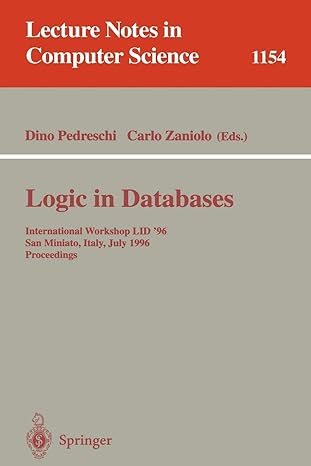Question
Using the program segment and sample txt file below, write a program that contains a linked list of students. The program should allow the user
Using the program segment and sample txt file below, write a program that contains a linked list of students. The program should allow the user to:
1. initialize list of students
2. add additional student to front of list
3. add additional student to rear of list
4. delete student
5. sort students alphabetically
6. sort students by idNum
7. show number of students in list
8. print students
9. quit program
XXXXXXXXXXXXXXXXXXXXXXXXXXXXXXXXXXXXXXXX
The program should be divided into the following segments
1. mainDriver.c. (contains main()function) 2. sll_list.h (given below. header file for this singly linked-list program) 3. sll_list.c (implementation file for singly linked-list program) 4. students.txt (given below, contains students for initializing linked-list)
XXXXXXXXXXXXXXXXXXXXXXXXXXXXXXXXXXXXXXXXXXXXXXXXXXXXX
Function prototypes:
list_t *newList( ); // creates a new list; returns a pointer to the new list
student_t *addStudent( FILE *inFile, int whichInput ); // called by addToFront() and addToRear() functions // creates and initializes new student node from input file pointer sent in (either file pointer specified on command-line or stdin that has been reset) // whichInput is intended to be a flag will which determine if the user prompts are to be printed or not // returns a pointer to the student that was just created
int printMenu( ); // prints the menu to the user; returns the menu choice
void initializeList( list_t *list, FILE *inFile ); // calls addToFront() sending input file pointer (file specified at the command-line) // note first value in input file is number of students in file the first value read in from file so you know how many times the loop needs to go
void addToFront( list_t *list, int whichInput, FILE *inFile ); // creates new student by calling addStudent() then adds returned student to front of list
void addToRear( list_t *list, int whichInput, FILE *inFile ); // creates new student by calling addStudent() then adds returned student to end of list
void deleteStudent( list_t *list, int idNum ); // deletes the student with the cuid sent in as idNum
void sortListByLN( list_t *list ); // sorts the list alpahabetically by last name
void sortListByNum( list_t *list ); // sorts the list by cuid
int size( list_t *list ); // returns the size of the list
int isEmpty( list_t *list ); // returns 1 if the list is empty and 0 if it is not empty
void printStudents ( list_t *list ); // prints the students in the list
XXXXXXXXXXXXXXXXXXXXXXXXXXXXXXXXXXXXXXXXXXXXXXXXXXXXX // ssl_list.h //
#ifndef SLL_LIST_H #define SLL_LIST_H
typedef struct { char month[4]; int day, year; } dateOfBirth;
typedef struct student { int age; float gpa; int Num; dateOfBirth dob; char lastName[20]; char firstName[15]; struct student *next; } student_t;
typedef struct list { student_t *head; student_t *tail; int size; } list_t;
list_t *newList( ); student_t *addStudent( FILE *inFile, int whichInput ); int printMenu( ); void initializeList( list_t *list, FILE *inFile ); void addToFront( list_t *list, int whichInput, FILE *inFile ); void addToRear( list_t *list, int whichInput, FILE *inFile ); void deleteStudent( list_t *list, int Num ); void sortListByLN( list_t *list ); void sortListByNum( list_t *list ); int size( list_t *list ); int isEmpty( list_t *list ); void printStudents ( list_t *list );
#endif /* SLL_LIST_H */
XXXXXXXXXXXXXXXXXXXXXXXXXXXXXXXXXXXXXXXXXXXXXXXXXXXXXXXXXXXXx
students.txt
5 19 3.2 123456789 Jan 31 1999 Smith David 20 3.0 456789123 Mar 7 1998 Jackson Susan 18 2.9 789123456 May 14 2000 Miller Scott 19 3.4 987654321 Sep 12 1999 Wilson Marie 20 3.7 654321987 Jun 21 1998 Johnson Curtis
Step by Step Solution
There are 3 Steps involved in it
Step: 1

Get Instant Access to Expert-Tailored Solutions
See step-by-step solutions with expert insights and AI powered tools for academic success
Step: 2

Step: 3

Ace Your Homework with AI
Get the answers you need in no time with our AI-driven, step-by-step assistance
Get Started


